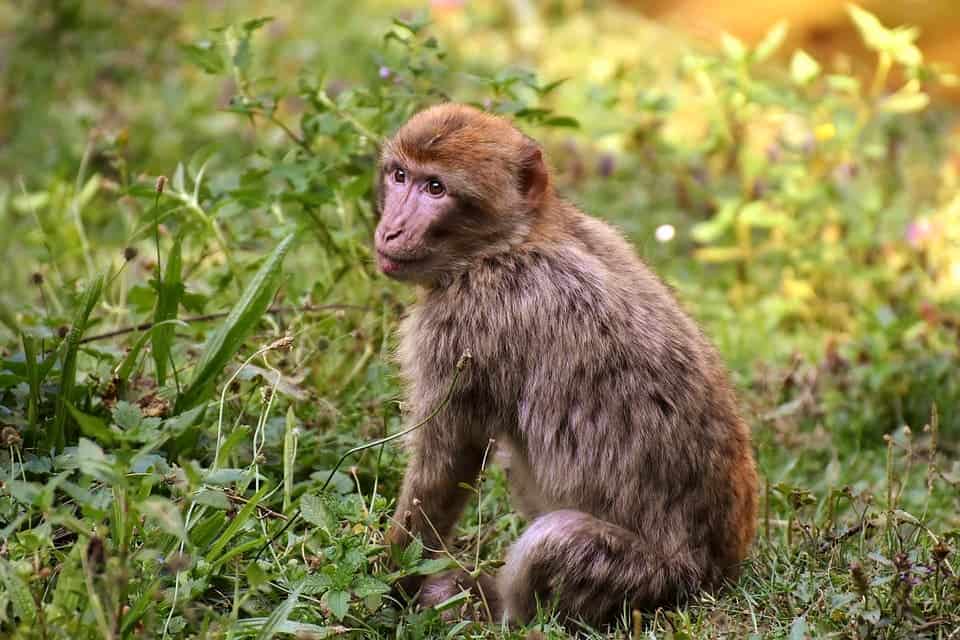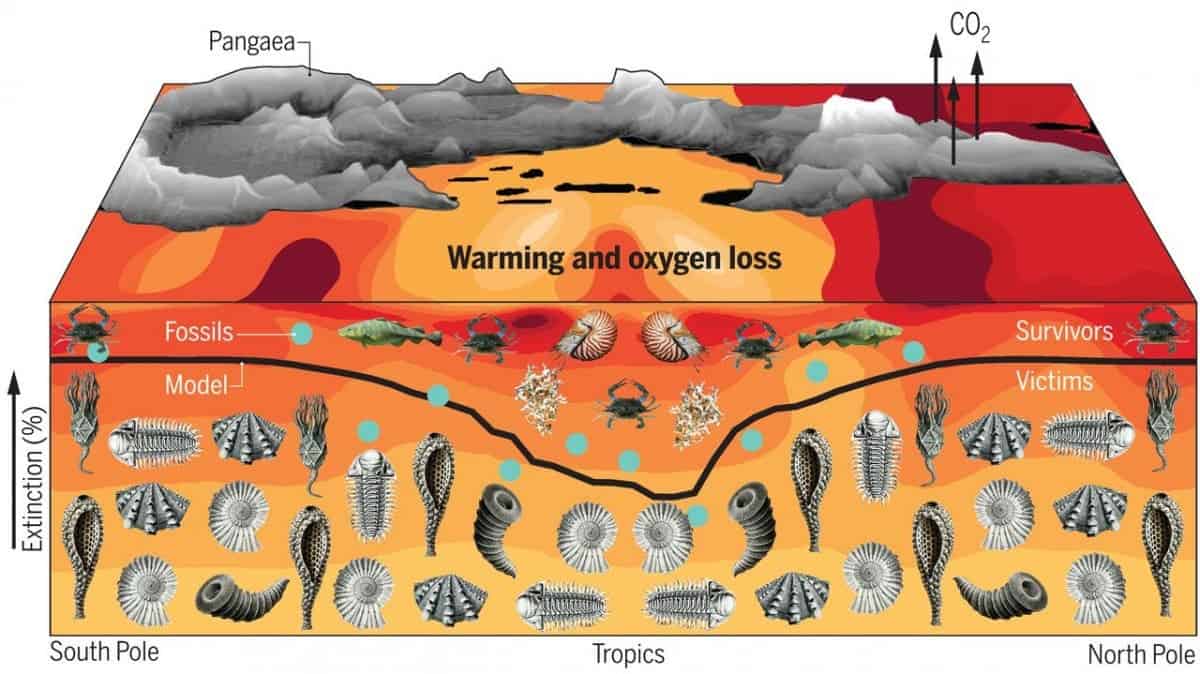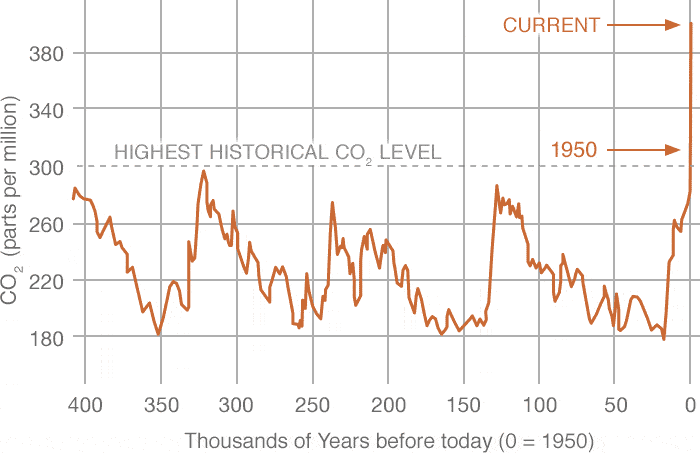Great climatic changes triggered the Earth’s biggest extinction, which wiped off 70% of terrestrial life and 96% marine life 252 million years ago, a new study suggests. A similar process seems to be taking place today, researchers warn.

Then…
We’re 252 million years in the past, in a period called the Permian. Almost all of the Earth’s landmass is clumped together into a supercontinent called Pangaea. Although it’s still in its earlier phases, life on Earth has developed to be remarkably diverse. But evolution was about to suffer a massive setback — a dramatic extinction that came to be known as “The Great Dying.”
“It was a huge event. In the last half a billion years of life on the planet, it was the worst extinction,” said Curtis Deutsch, an oceanography expert who co-authored the research with University of Washington colleague Justin Penn and Stanford University scientists Jonathan Payne and Erik Sperling.
Despite the magnitude of this event, researchers have found relatively few clues about it — until some 20 years ago.
The problem is that 252 million years is a long time (even in geological terms), and finding reliable evidence that survived the onset of this much time is not easy. However, modern dating techniques (particularly the U–Pb dating of zircon crystals) allowed geologists to pinpoint this extinction to a few thousands of years — which given the scale of things, is quite impressive.
Similarly, radiometric studies have revealed that the extinction coincided with (and was likely caused by) massive volcanic eruptions. However, not all was clear. Specifically, it was unclear how the volcanic eruption and the extinction event were related.
Now, a new study suggests that the determining mechanism was an all too familiar one: climate change.

Essentially, the eruptions caused intense and abrupt global warming, which in turn depleted the oxygen from the oceans, causing the ocean’s creatures to effectively suffocate. Using a complex model powered by a supercomputer, the authors found that the combination of these two factors alone (warming water and low oxygen) can “account for more than half the magnitude of the ‘Great Dying’”.
If those two factors seem somewhat familiar, it’s because they’re also taking place today.
… and now
The story seems remarkably similar to what we’re experiencing today, as researchers themselves underline in the study.
“Voluminous emissions of carbon dioxide to the atmosphere, rapid global warming, and a decline in biodiversity—the storyline is modern, but the setting is ancient,” Penn State geosciences professor Lee Kump, who was not part of the research team, wrote in a Science piece responding to the new findings.
Indeed, it’s stunning how similar the two situations are. In both cases, an event caused temperatures to rise in a relatively short amount of time — but whereas 252 million years ago that was a volcanic eruption, in this case, it’s the greenhouse gas emissions outputted by mankind.
“The ultimate, driving change that led to the mass extinction is the same driving change that humans are doing today, which is injecting greenhouse gases into the atmosphere,” Justin Penn, a University of Washington doctoral student in oceanography and the study’s lead author, told the Seattle Times.
“The study tells us what’s at the end of the road if we let climate [change] keep going,” warned Curtis Deutsch, Penn’s co-author and PhD adviser, as the latest projections show emissions hitting record-breaking levels this year. “The further we go, the more species we’re likely to lose… That’s frightening. The loss of species is irreversible.”
Scientists are also tracking oxygen depletion in the oceans, and have reported some worrying trends, which already start to resemble what was happening in the late Permian.
[panel style=”panel-danger” title=”Greenhouse gases” footer=””]The extinction event likely occurred over a timeframe of tens or hundreds of years, during which Earth’s temperatures increased by around 10°C (18°F). Oceans lost around 80% of their oxygen, and many parts of the seafloor became completely oxygen-free. This warming was almost certainly caused by a huge spike in greenhouse gas emissions, caused by volcanic activity.
[/panel]
Simply put, we may be witnessing the start of another catastrophic period for Earth’s biodiversity, and contrary to popular belief, life doesn’t necessarily “bounce back” — it may be permanently affected. Previous studies have indicated that it took life at least 4-6 million years to recover after the Great Dying, while other authors put that figure towards 30 million years.

Another striking similarity between the Great Dying and modern times is the devastation of insect populations. The ancient extinction is the only known mass extinction of insects — and insect populations have declined dramatically in the past few decades — the blink of an eye, in geological time.
If this all seems a bit alarming, well, it should. Finding so many similarities between the world’s greatest extinction event and today’s times is not something to be happy about. If our greenhouse gas emissions are not curbed, life on Earth (including humans) may be irreparably damaged.
“As our understanding of the drivers and consequences of end-Permian climate change and mass extinction improves,” Kump wrote, “the lessons for the future become clear.”
Within the Paris Agreement, countries pledged to reduce emissions and limit global warming to a maximum of 2 degrees Celsius over the pre-industrial levels, but globally, action has been lackluster, and several studies have found that an increase of over 4 degrees Celsius is much more likely.
World leaders are currently meeting in Katowice at the annual UN climate summit (in which the Paris Agreement was also signed) to decide the best course of action, but despite some remarkable initiatives, there are few reasons for optimism.
It’s easy to feel powerless in the face of such massive processes, but it’s important to remember that collectively, our decisions are one of the most powerful geological forces in our planet’s history. Your decisions do matter — make it count.
The study “Climate change and marine mass extinction” has been published in Science.






